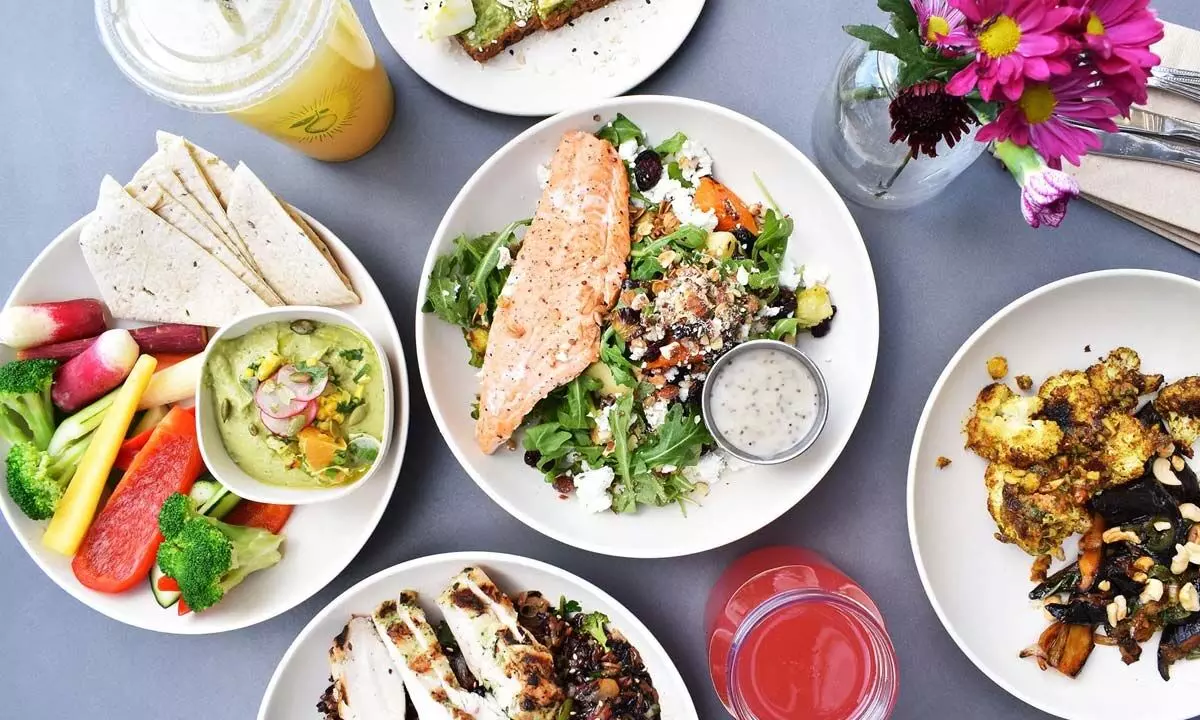What India Eats to Lead a Heart-Healthy Life: Food Trends in 2023

In today’s world, modern lifestyles often involve sedentary habits, unhealthy eating patterns, and high levels of stress. It is thus imperative to maintain your overall wellbeing and above all protect the most vital organ, your heart.
In today’s world, modern lifestyles often involve sedentary habits, unhealthy eating patterns, and high levels of stress. It is thus imperative to maintain your overall wellbeing and above all protect the most vital organ, your heart. Cardiovascular diseases (CVDs) are a group of disorders of the heart and blood vessels which have become the leading cause of mortality in India. Main causes being genes, lifestyle or other organ issues. Lifestyle is one component that can be controlled to ensure we live heart healthy lives. Incorporating exercise, maintaining a balanced diet, and ensuring sufficient sleep are some of the key ways to cultivate a better lifestyle. Notably, our dietary choices can make or break our heart health.
Fortunately, we live in a country like India, where traditional food systems are inherently healthy. Today, we are witnessing the revival of these traditional and ancient food systems, with people increasingly recognizing the benefits these diets offer. Some of the prominent trends in 2023 include preferences for multi-grain, plant-based, and vegan foods. With a growing awareness of health, Indians are gravitating towards health-friendly food choices, such as blended oils, whole grains (such as millets, oats, quinoa, etc.), and green vegetables. Moreover, foods and superfoods that provide enhanced heat stability, anti-inflammatory properties, and a blend of nutrition and taste are gaining widespread popularity.
Traditional Diets: A Healthy Choice
The dietary habits of Indians differ given the diverse landscape, cultural norms, local conditions and seasonal produce. Surveys conducted by FAO and USDA estimate that 20 to 42% of Indians follow a vegetarian diet. While meat is consumed among certain communities, our daily balanced plate includes a lot of plant-based foods, fruits, vegetables, grains, legumes and lentils. Lentils and legumes stand out as great sources of protein in plant-based diets and are creatively incorporated in various dishes. For eg. Lentils are often combined with rice to make khichdis, while legumes are seasoned and eaten in salads. These foods are low in saturated fats and high in vitamins, minerals and antioxidants that promote heart health.
Recently, India has witnessed a significant dietary transformation towards healthier choices. Ancient grains like quinoa and millets have emerged as popular choices due to their versatility and ability to replace key conventional ingredients while providing essential nutrients and reducing the ecological impact. Among these changes, plant-based proteins, such as lentils and chickpeas, have also taken a prominent role in people's diets. Additionally, multi-grain flour has gained popularity in India catering to health-conscious consumers seeking diverse and sustainable alternatives to conventional wheat flour.
Inspired by our traditional recipes yet staying up to date with the world, people are also gravitating towards homemade dishes, condiments, and fusion dishes. Regional and traditional cuisines are experiencing a revival, but with a twist of modern flavours. There is also increased interest among millennials, and Gen Z for veganism and fusion cuisine. Some popular picks include nut-based or plant-based curries, vegan dairy products and blended oils among others.
Heart-Healthy Components in Indian Diets
A heart-healthy diet focuses on reducing saturated fats, trans fats, and cholesterol, while incorporating a balanced mix of whole carbohydrates, protein, and healthy fats.Indian meals naturally adhere to these principles, as they often consist of a balanced plate that includes grains, lentils, vegetables, dairy, spices, and healthy cooking oils. An example of a heart-healthy Indian thali could include chapatis, lentil curry, vegetables, and brown rice with a side of salad.
Choosing healthier cooking oils is also a crucial part of maintaining a heart-healthy lifestyle. Opting for cooking oils like Saffola multi-source cooking or blended oils, which are high in monounsaturated or polyunsaturated fats, can significantly benefit heart health. These oils help reduce LDL (bad) cholesterol levels and promote a healthier lipid profile. Incorporating heart-healthy cooking oils into everyday Indian meals can be as simple as using them for sautéing, stir-frying, or salad dressings.
In addition to consuming a balanced meal to obtain essential nutrients, it is equally crucial to cook your food in a manner that preserves the inherent nutritional value of the ingredients. Traditional Indian cooking techniques like slow cooking, fermentation, dum cooking, are known to retain essential vitamins and minerals and contribute to a healthier meal.
To sum up, by embracing the diverse and wholesome ingredients present in Indian cuisine, we can create balanced meals that nourish our hearts and bodies. Let us prioritize heart health through conscious dietary and lifestyle choices, knowing that the path to a healthier heart lies in the foods we choose to consume. By embracing the food trends of 2023 which are inspired and derived from age-old traditional Indian foods, we can lead a heart-healthy life and enjoy the benefits of improved well-being and vitality.















